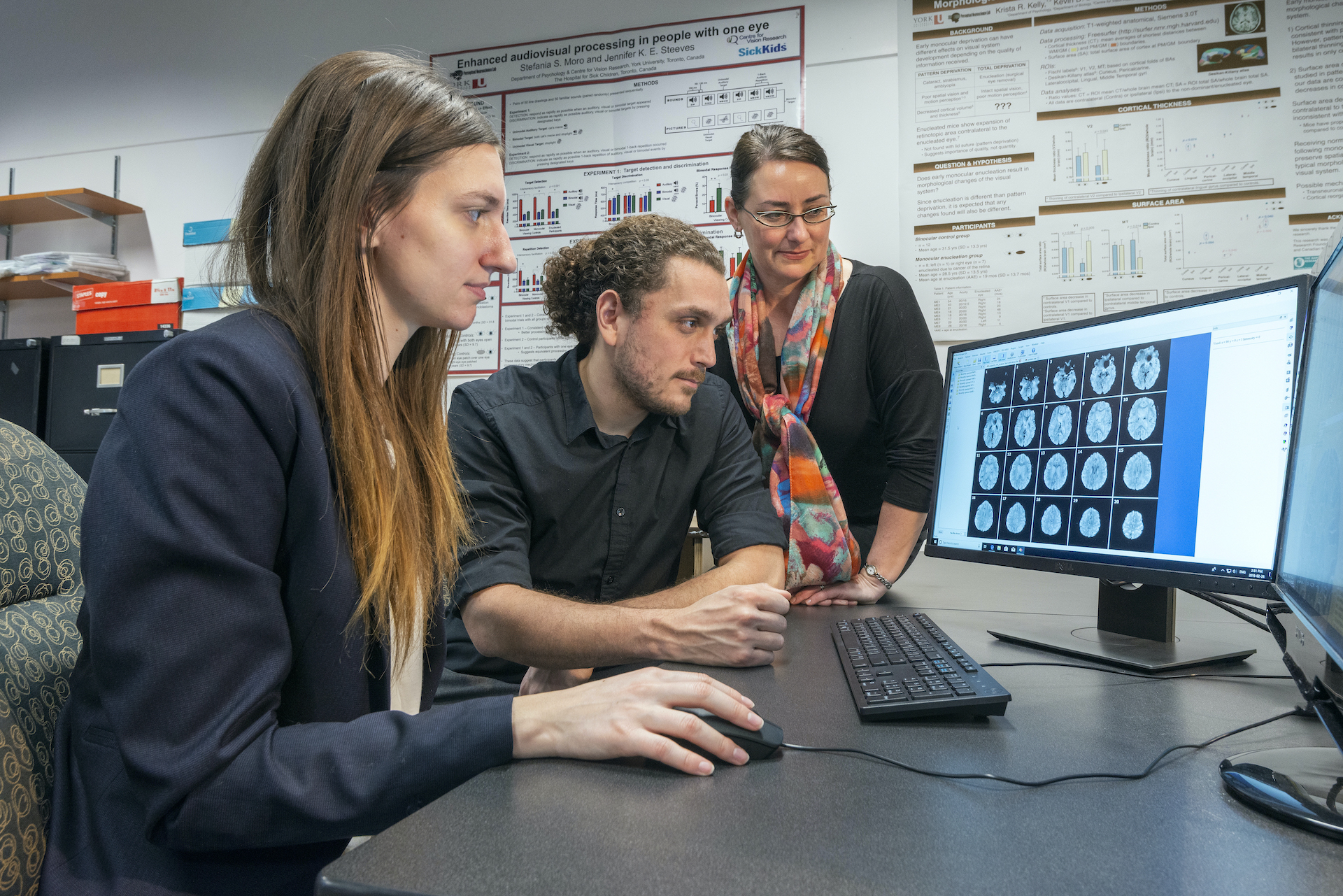
Welcome to The Perceptual Neuroscience Laboratory!
About Us
The Perceptual Neuroscience Laboratory explores how the brain processes our visual world. How are basic features of a visual image, such as edges, colour and textures, brought together to represent objects, faces and scenes? How does sound integrate with the visual system? How do these systems work normally? What happens when they are disrupted?
We use converging techniques to study the brain and behaviour, including psychophysics, eye movement measurements, functional magnetic resonance imaging (fMRI), fibre tract tracing and transcranial magnetic stimulation (TMS). TMS creates virtual lesions in the brain of healthy people, which helps determine the function of particular cortical regions such as the areas that process faces. We also reverse engineer brain activity by studying what happens when the visual system's normal functioning is disrupted in clinical patients or by applying TMS in healthy people.
Patient groups we study include:
- People who have lost one eye early in life, which challenges depth perception in a 3D world. How does the brain adapt? See my blog at RB Canada Research
- People with visual hallucinations after loss of vision, such as those with Charles Bonnet Syndrome
- Neurological patients with rare brain damage to specific parts of the visual system (such as those with prosopagnosia who are unable to recognize objects or faces)







